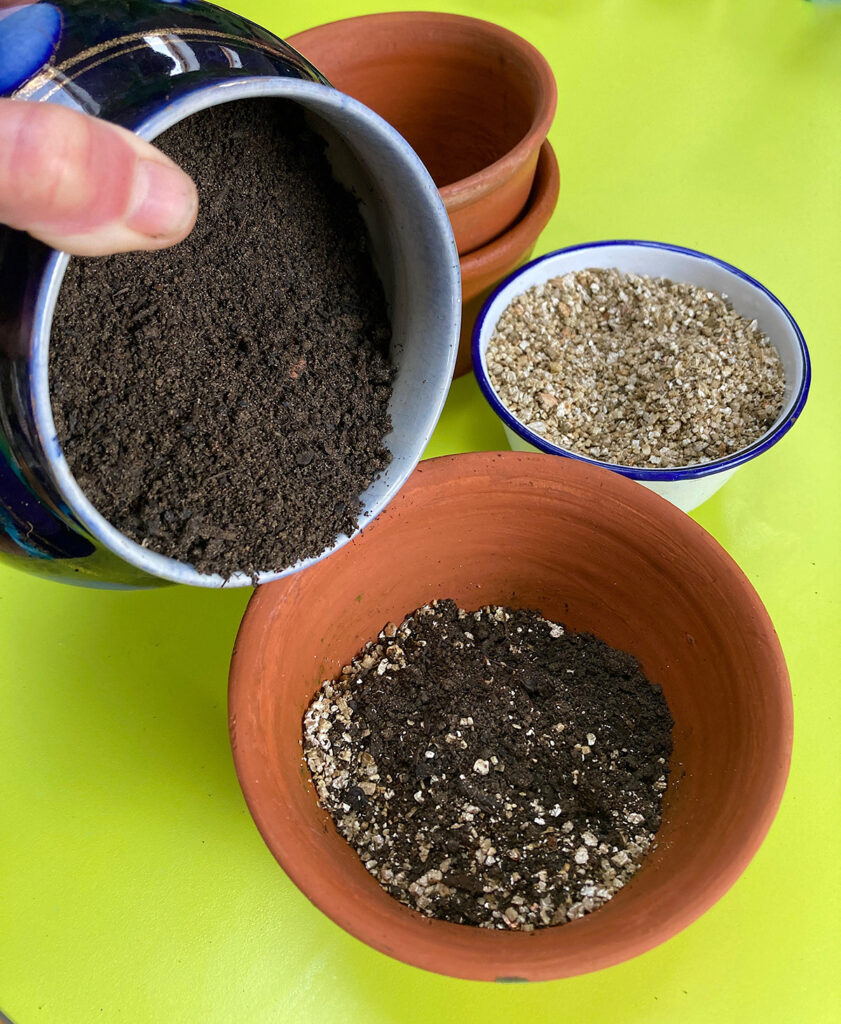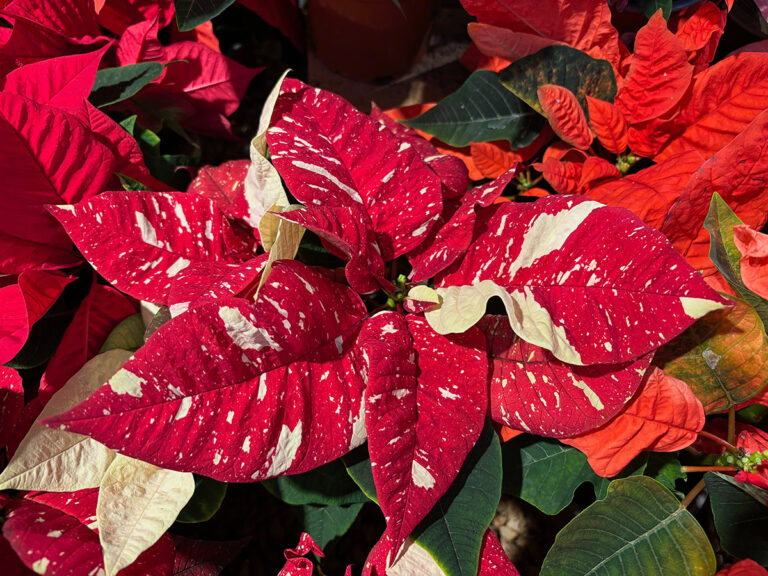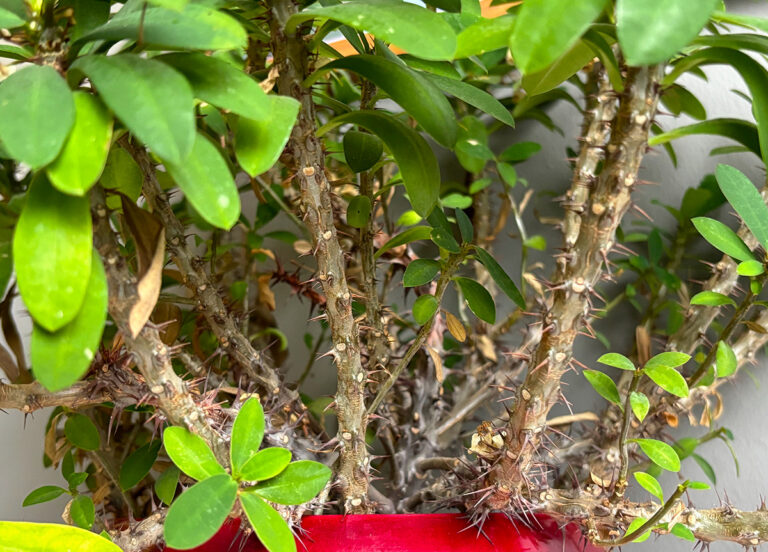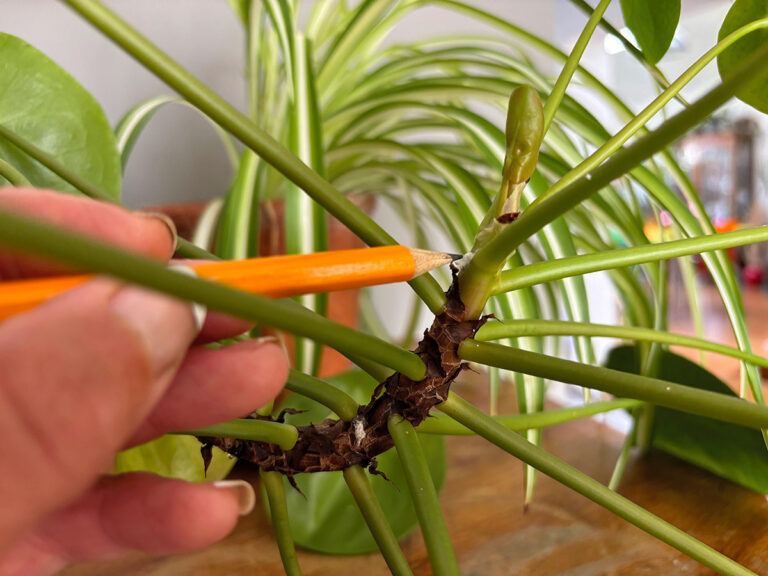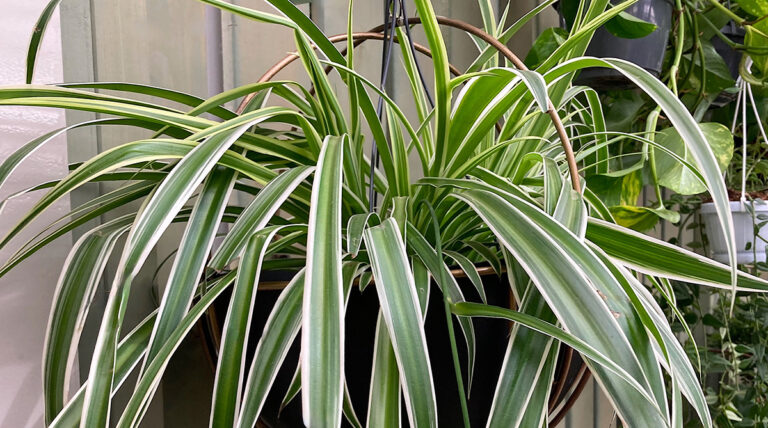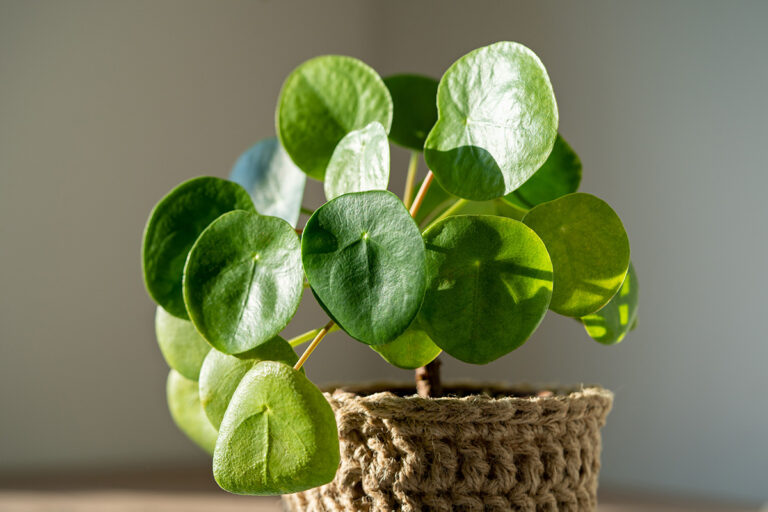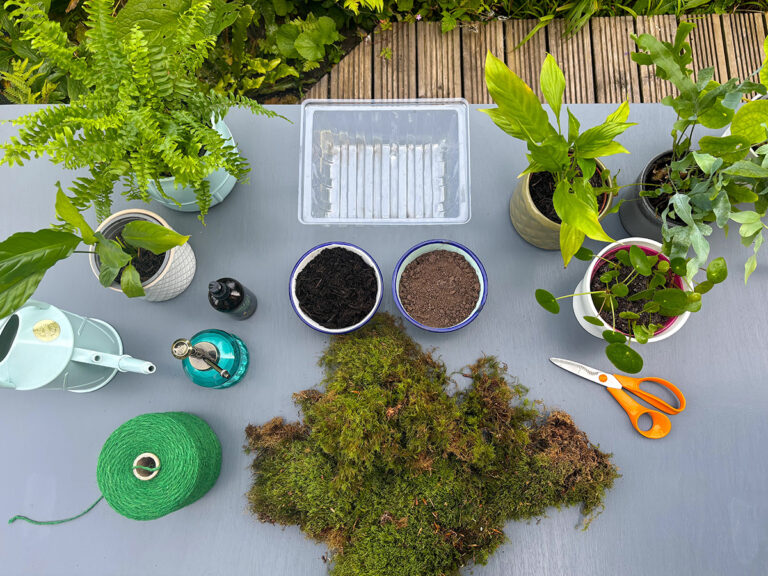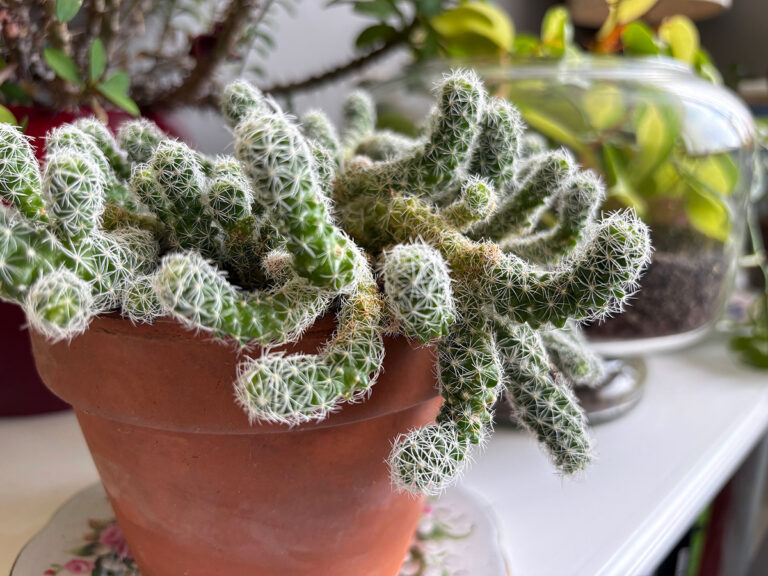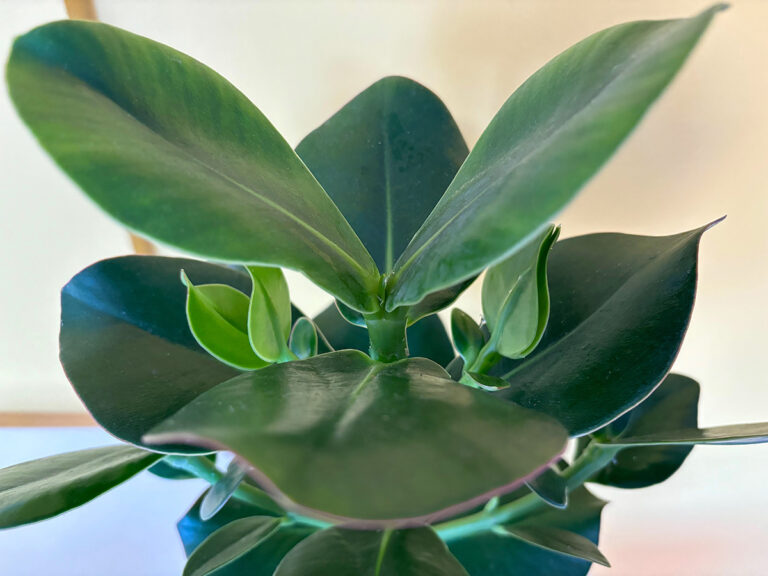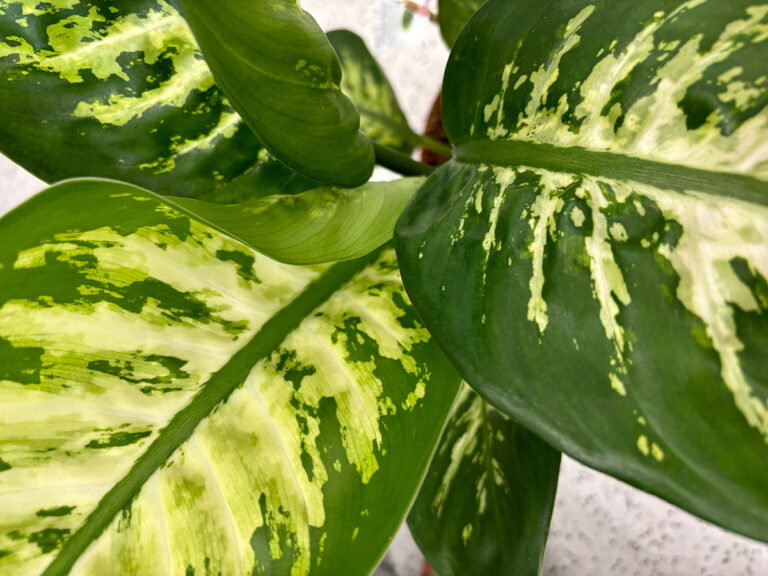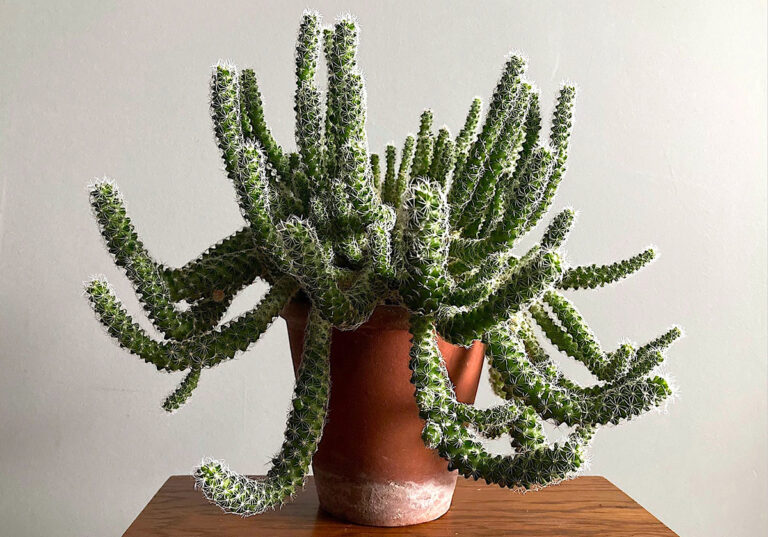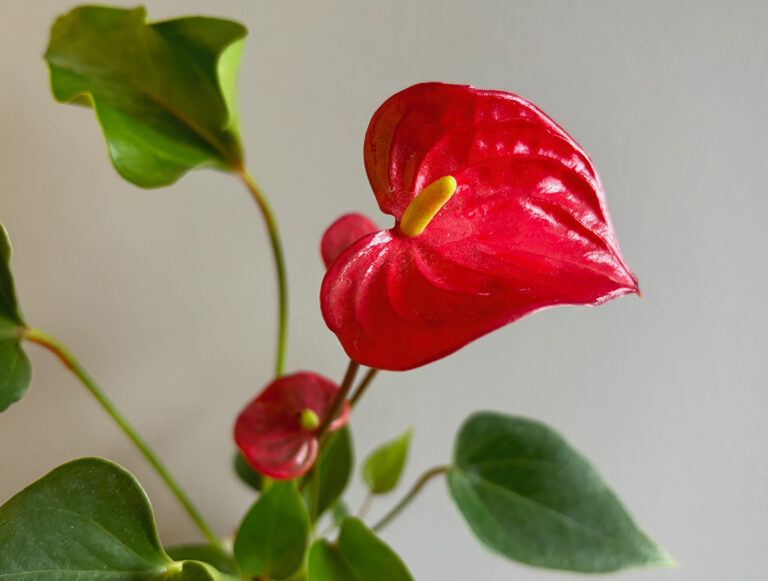It is always nice to share some tips you’ve discovered whilst being a houseplant parent. Check out these quick and easy hacks that can save you time and money and keep your houseplants in tip top condition.
Repotting
Repotting can seem a little daunting at times. When your treasured plant is straining out of its pot, roots protruding through the base, then it is time to upgrade the pot size.
Although some houseplants thrive on constricted roots most like a bit of space but you can actually over do it so always aim to only repot one size up.
Get your new pot and place the old pot inside it, this will create a space around the edge which can be filled with houseplant potting mix. Then carefully extract the old pot out and tease the houseplant, roots and all out of its original pot. Tap off the old compost so you can refresh with new, then place the root ball in its new pot and infill with fresh, gritty, peat-free compost. Job done!
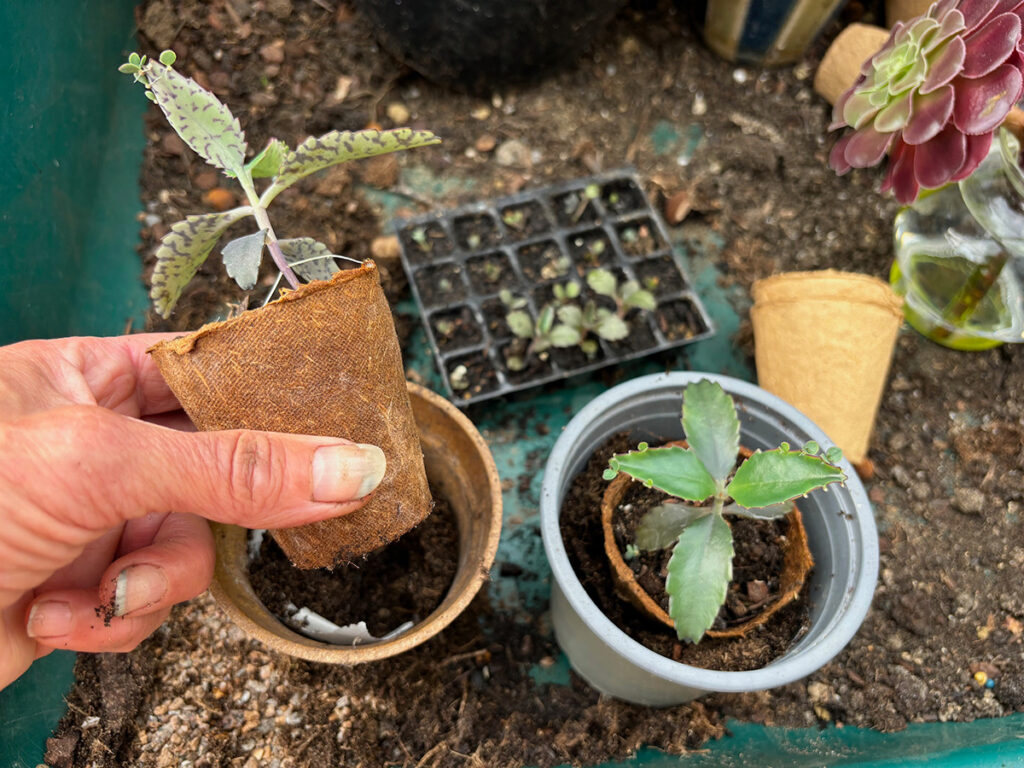
Recycled Mister
Plantsmith products are packaged in beautiful glass jars and I for one find it hard to throw these away once I have finished them so give them a second life as water misters. Repurpose your old Plantsmith’s Perfecting Houseplant Care Mist bottles by simply filling with water. Don’t forget to reorder a new care mist!
Dealing with unwanted visitors
However conscientious we are caring for our houseplants inevitably unwanted visitors like mealybug may move in from time to time, even with immaculate housekeeping and cleanliness but the humble pencil can come to the rescue. Mealybug like to hide in the crevasses of leaf joints and often go unnoticed for some time sucking the life out of our precious plants. These spaces are almost impossible to reach with our finger tips without damaging the plant but a pencil nib provides the perfect pointer to insert in to these tight spots to remove culprits.
Deter further infestations with regular squirts of Plantsmith’s Bug Control Spray; this natural and non-toxic formulation will provide a protective boost.

Biodegradable fibre pots
Save time and prevent plant root disturbance by using peat-free biodegradable fibre pots when propagating. Simply pot on your cutting or plantlet into a fibre pot of gritty peat-free compost then when the cutting is established transplant the entire pot into a larger pot and infill with compost. The fibre pot will break down over time allowing the plant’s roots to naturally spread. This method works particularly well with succulents like Mother of Thousands (Kalanchoe daigremontiana), which produces copious amount of plantlets. Propagation in biodegradable pots is a quick and easy way to generate free plants to increase your collection or gift to friends.
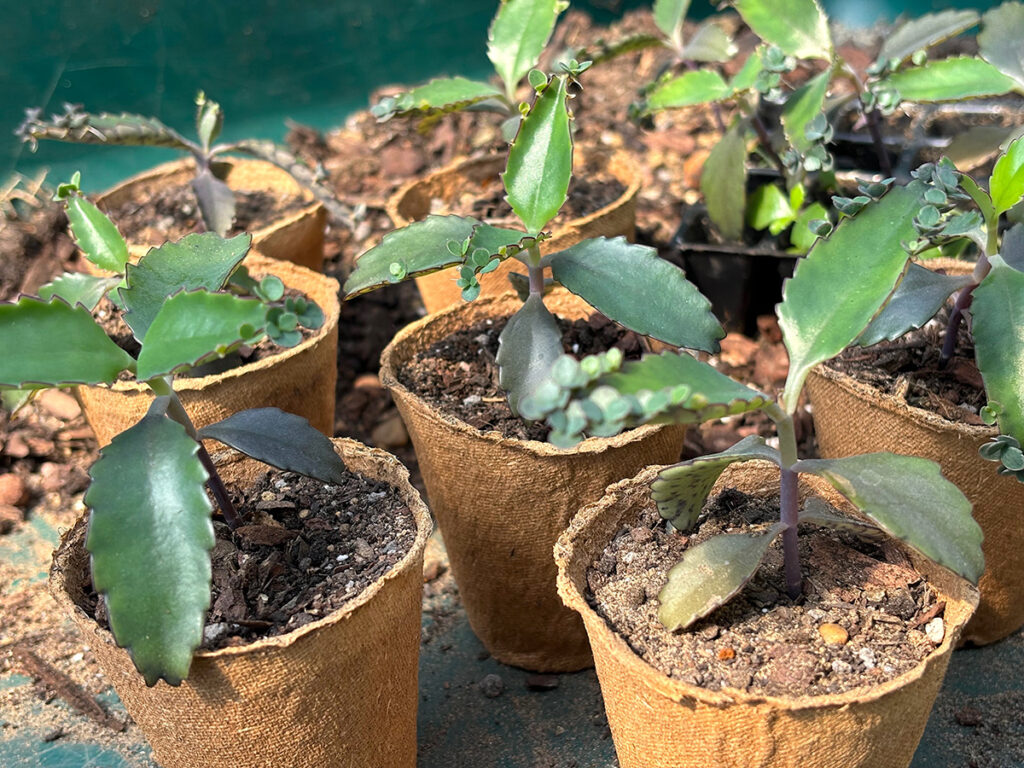
Get out your duster
However clean your home is, dust naturally occurs and static houseplant leaves are a magnet for attracting it. Over time dust will block light getting to leaves and can hinder the plant’s efficiency to photosynthesise so get out your duster and gently wipe down foliage to remove this smothering thick layer. Restore gloss and shine to houseplant leaves.
Loosen dust by spraying with water before wiping or use Plantsmith’s Beautifying Leaf Shine Spray whose cold-pressed natural oils act as a conditioner and provides natural anti-fungal protection.
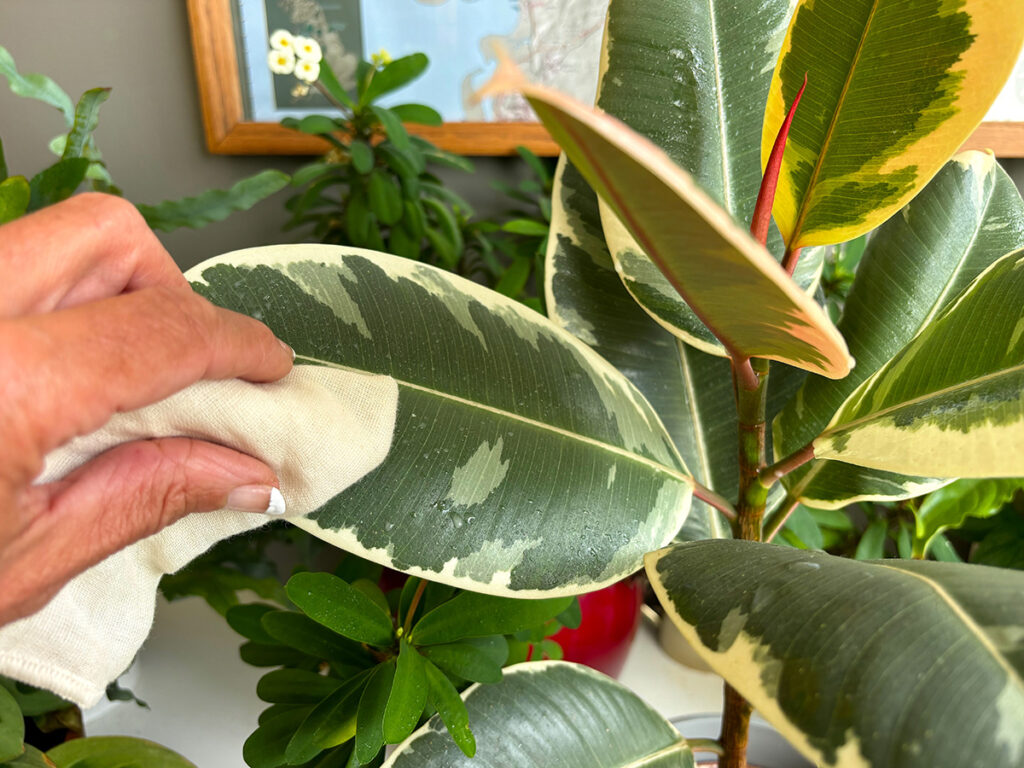
Make room for a moss pole
Lots of houseplants like monstera are natural climbers in the wild so unless you have a tree growing in your house these plant’s aerial roots are going to need a bit of external support to cling on to. Shop bought moss poles come in various lengths and are generally made from coco coir which is derived from coconut fibre. They are a simple, cheap way to add height to your display, and attempt to mimic the plant’s natural jungle environment.
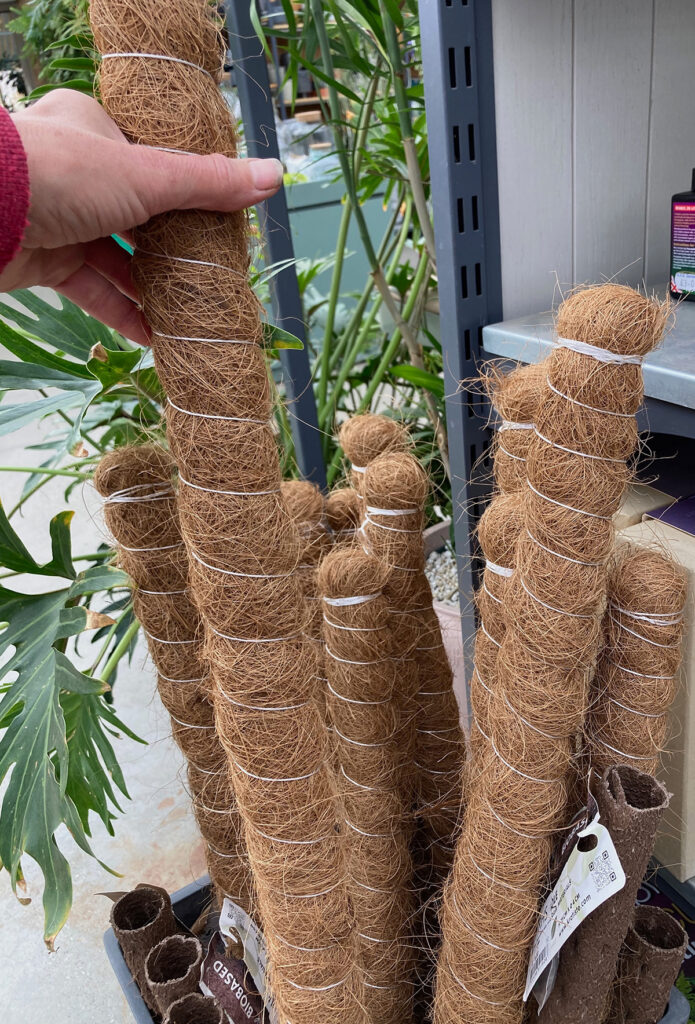
Mind those spikes!
Use tongs when repotting cacti to avoid those painfully sharp spines sticking in your fingers. If handling large cacti then a towel comes in very handy or even try folded up newspaper to wrap around cactus to keep spines away from your skin. Always wear gloves.

Deter fungus gnats
Fungus gnats can plague houseplant soil and it can feel an uphill battle to try and eliminate them but help is hand with this handy hack. Fungus gnats need to lay their eggs in soil but you can disrupt their lifecycle by placing a barrier on the soil surface to deter egg laying.
Plantsmith have created a Fungus Gnat Barrier & Pot Topper which is a 100% natural, sustainable by-product of olive production made from crushed olive pomace. This eco-barrier also has the added bonus of slowing down evaporation so the pot soil does not dry out so quickly.

Wonky Plants
Ever wondered why your plants start looking wonky after a few months? The reason could simply be that your plant is leaning towards the prominent light source. Plants need light to photosynthesise to produce energy to grow and will rotate towards any light source; over time stems can distort as they bend to reach the light. This response to light stimulus is due to the plant growth hormone auxin and is known as phototropism. The simple solution to keep plants growing straight is to regularly turn pots so all sides of the houseplant foliage receives light equally.
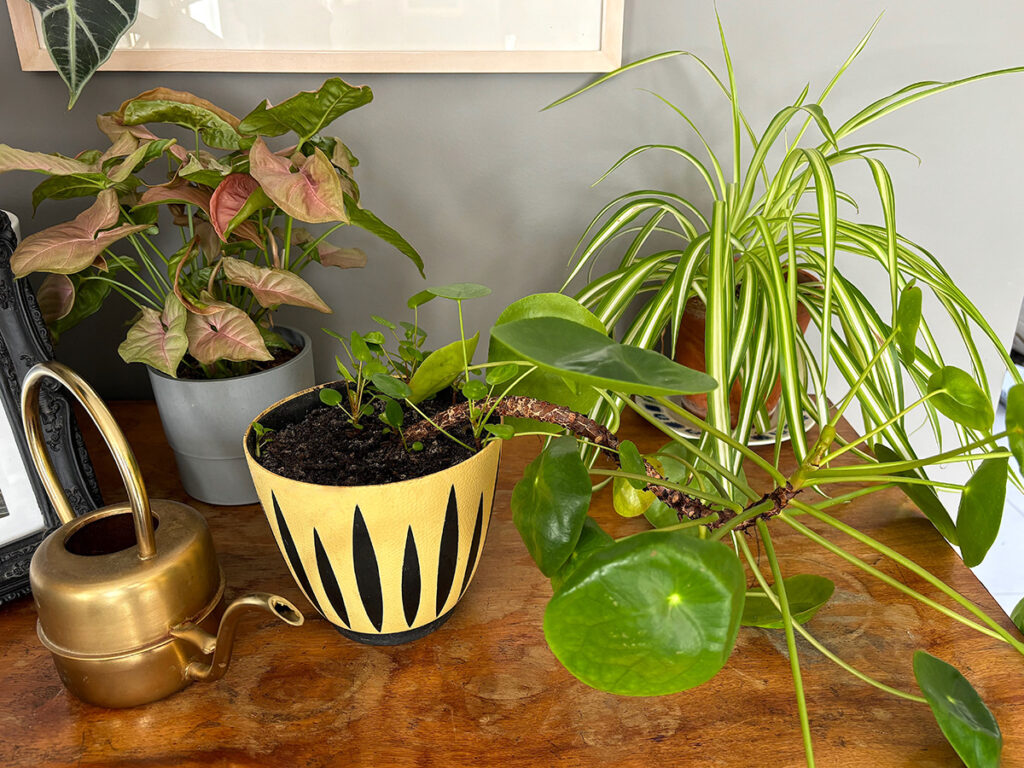
DIY potting mix
A vast variety of potting mixes are available in shops or online but once your plant collection starts to grow it can get very expensive to keep buying little bags of specific houseplant potting mixes so the solution: make your own! By creating your own bespoke mix you can decide what ratio of materials to use to suit the plants you are growing, for example add more grit or sand to accommodate cactus.
A useful hack is to substitute perlite and vermiculite for dust-free, non-clumping, clay-based cat litter; this will do a good job of providing aeration, water retention and drainage in the soil but at a fraction of the price.
Try mixing Plantsmith’s Peat-Free Easy Houseplant Compost with sand, grit or cat litter to make it go even further. This compact and light premium product arrives as a compressed block which is super easy to activate. Add water and make up to 10 litres of nutrient rich compost containing the perfect balance of coconut coir (a by-product of the coconut industry) mixed with slow release Plantsmith nutrients that feed and nourish houseplants for up to six months. Suitable for all houseplants apart from orchids, cacti and bonsai trees.
